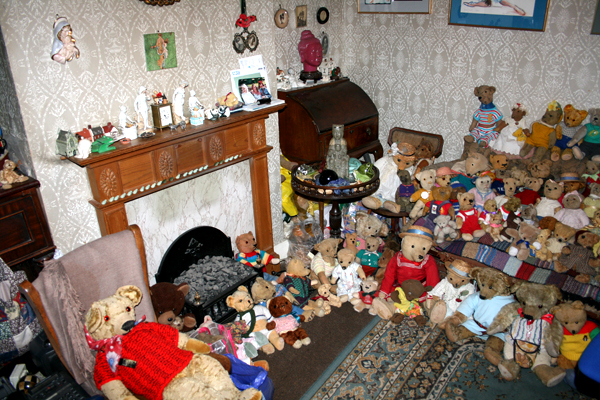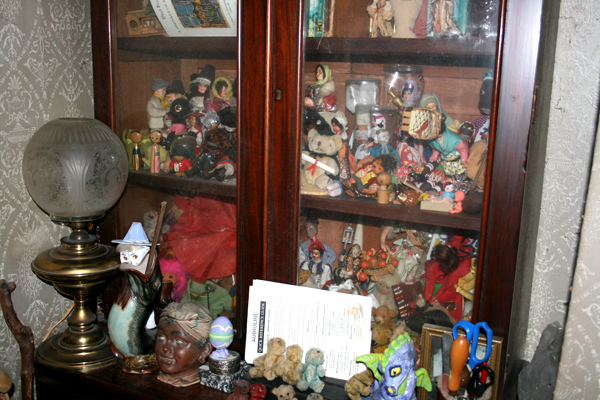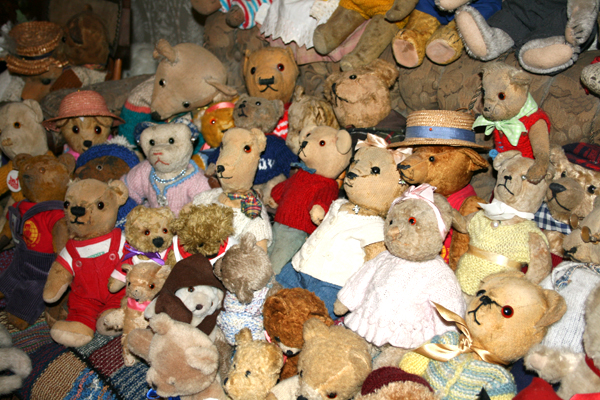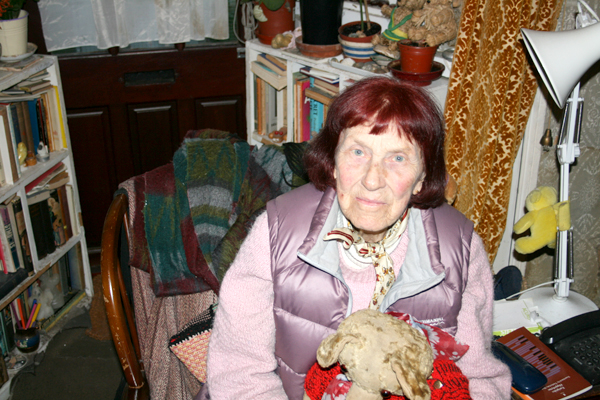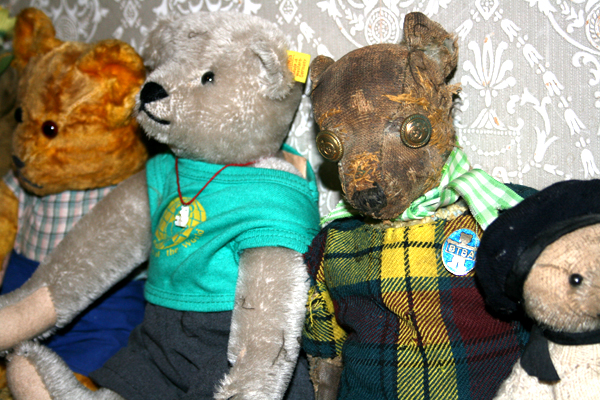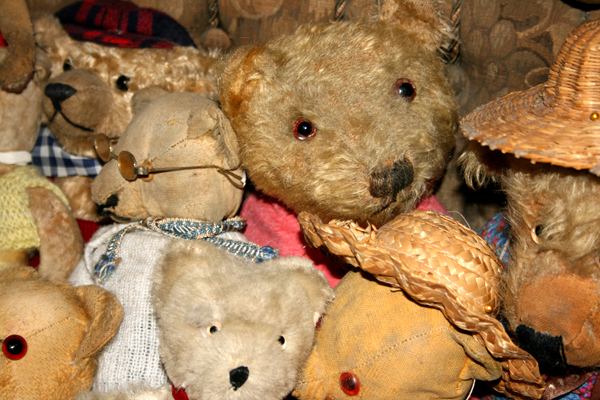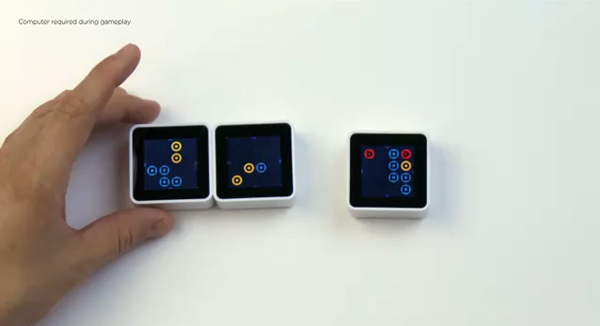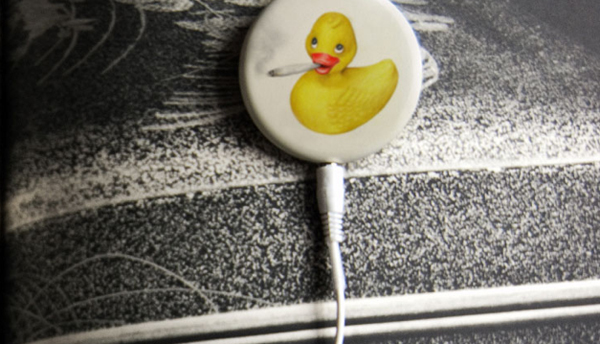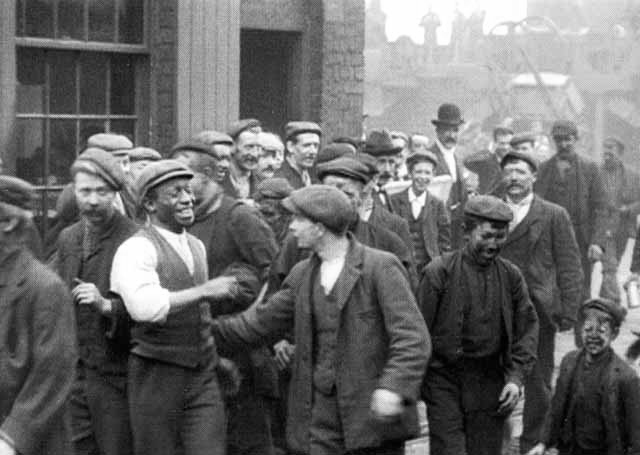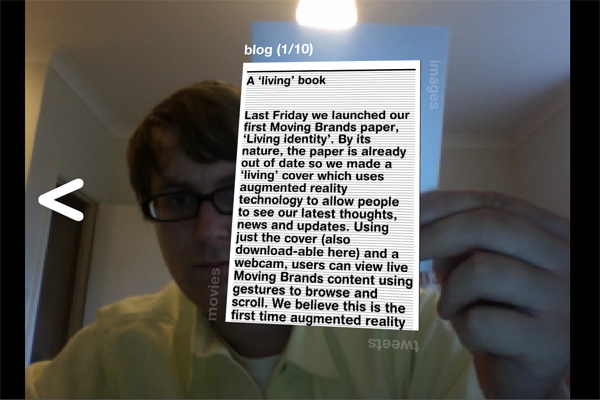Great bits of tech scavenged from around the internet via BERG, Russell Davies, Its Nice That, and I can't remember where I found the projection mapping sand sculpture. (Fucking Wordpress is being weird I'm being stupid but I can't get videos to embed- you'll have to trust me and click the pics to check them out- sorry)
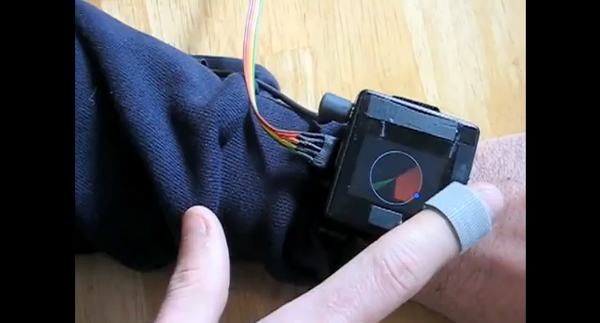
Videos!
From around the interwebs- Salesman Pete- an amazingly animated video about a super hero salesman, put in front of my eyes by the animation guru Alex Amelines a.k.a onehugeeye.
Next up is a classic music video from the Ohio Players: Fire. You'll have to trust me that it really IS worth investing 9 minutes into.
Last but not least is the vimeo award winning short film about a mans last moments with his dying dog. Oh by the way, if you don't shed a tear then you are made of stone.
Mitchell & Kenyon
I was recently lent a great documentary film about Lancashire based film duo Mitchell and Kenyon. The pair were active in the early 1900s and shot Edwardian life to use as entertainment in the traveling shows. For example they would set up their camera to take footage of factory workers coming out of the gates at the end of the day- they would encourage people to get in shot and people smiled and waved and stuff and then the film would be shown the following evening as part of a nights entertainment and people would come and watch themselves on the screen.
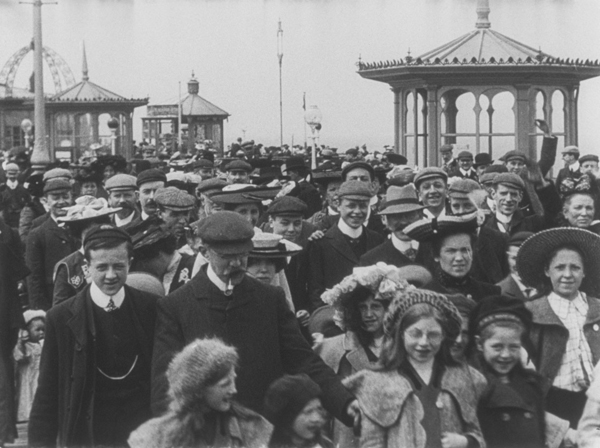
It's fascinating to historians as it provides a valuable insight into life then and specifically in and around the North West of the country. But I think it's more interesting when you start to consider spectacle and documentary and home video. It's also really interesting as when you see footage of these people from a hundred years ago (which normally you see as static photographs) you quickly understand what a short time ago it was and, we always consider people back then to be juddery (thanks to different frame rates on many cameras and stuff ) or stiff (as in the smart photographs) but when you see people moving around freely and normally (and I know it sounds stupid, but as you or I would) the anachronistic clothing and cars and stuff is forgotten a human connection emerges which I hadn't expected. You do get a real sense for the people in the images- smiling and being excited about this new technology. I wish I could have that novelty of being filmed and watching myself on screen in such an innocent way as they did. Sadly it will never be- I've grown up with cameras and video and the spectacle of cinema and the unreal on screen, not to mention the fact that any city dweller has to give into the fact that they are probably filmed 50 times a day (or whatever the scaremongers tell us).
A really interesting and worth watching artifact.
Processing Pt. 3
Spent a productive day kinda getting to grips better with the object functions, arrays (and iterating through them), and the dist function in processing. With a decent sized shout out to Mike for some tweeking of code to actually make the bastard work I managed to get some quite pretty results. The top stuff is a proximity sort of thing each time a new point is drawn it assesses how far away the other points are from it and draws a darker line depending on how close it is to a given point. Pretty. The second set is a simple (but triumphant for me!) distance thing done earlier on in the day where it assesses how far a new point is and if it's within a certain range draws a line to the middle of the sketch. I felt well good after doing these- looking forward to doing some more. (code to follow when i figure out how to do it!)
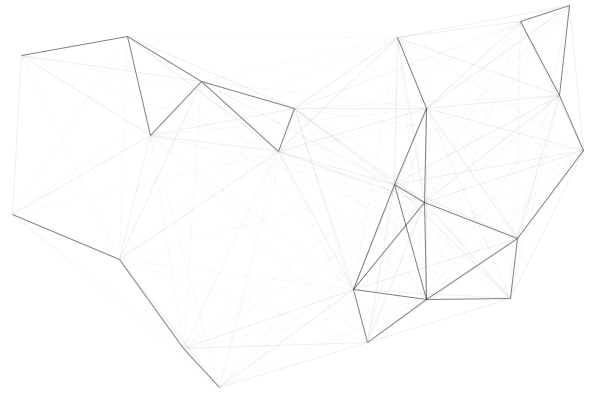

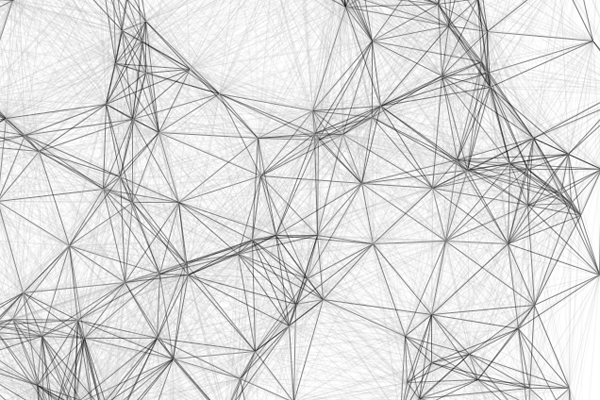



The Lonely Image
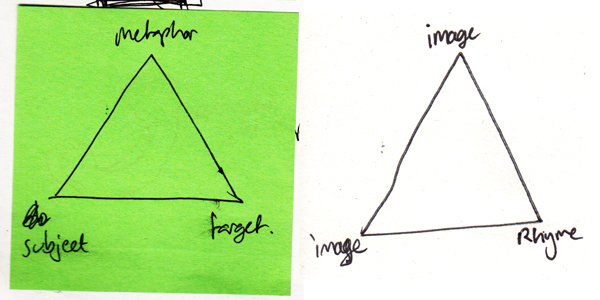 I'm interested in the relationships between objects. For the purposes of this piece of writing, 'objects' will be 2D images or titles/words.
I'm interested in the relationships between objects. For the purposes of this piece of writing, 'objects' will be 2D images or titles/words.
I am interested in the relationships which can be formed between two objects when they are presented side by side- as in a book spread. The spread creates a context for the objects to inhabit and invites the viewer to understand not only two separate images, but also the narrative which the objects create together, through merit of sharing the same space.
There are three ways in which adjacent objects may reference each other.
The first is to do with the physicality of the objects - colour, shape, form - strictly aesthetics. Two images may refer to each through merit of both being blue, or the focal point being a clock etc.
The second is concerned with the symbolical nature of an object and the ideas, attributes, and meanings which such objects reference. For example an image of a beach representing a memory of a holiday, a shell as a souvenir of the same experience, or a train ticket of the journey completed to get to the holiday. Other examples of ideological referencing could be religious symbols, celebrity icons, or brand logos.
The third referencing type is one of labelling and frames. Objects, even if attached arbitrarily, through their nature of sharing a page, refer to each other and have a dialogue. Through merit of being under the same title or being grouped together, these artefacts are forced to begin a discourse with each other. This is known as contiguity- from Aristotle’s ‘Laws of Association’- whereby things which are in close proximity are linked and ‘readily associated’.
Referencing is what allows objects to connect with each other and have a dialogue. Whether this dialogue is interesting or communicates the intentions of the curator depends on how well those objects rhyme together.
The skill of rhyming objects is similar to that of the story teller: to create either an ideological or physical (material or aesthetic) thread between a group of objects to create a fuller, deeper understanding of their context, history, and narrative. Juxtaposition of objects is very important and a pair may still rhyme even if the neighbouring objects are incomplete. Rhyme can give a spread a certain poetic and approximate logic.
I am particularly interested in the accidental ways in which objects may rhyme- when two things are abstracted from their original context and framed as a pair to extract something entirely unexpected and meaningful.
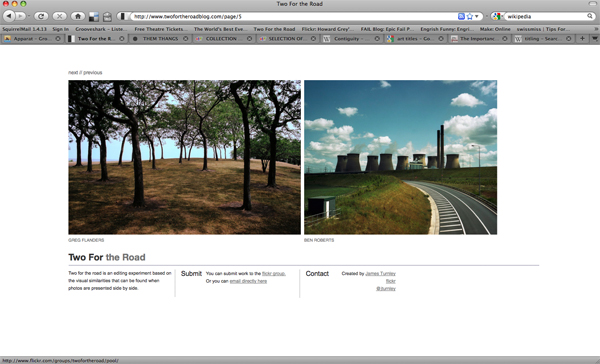
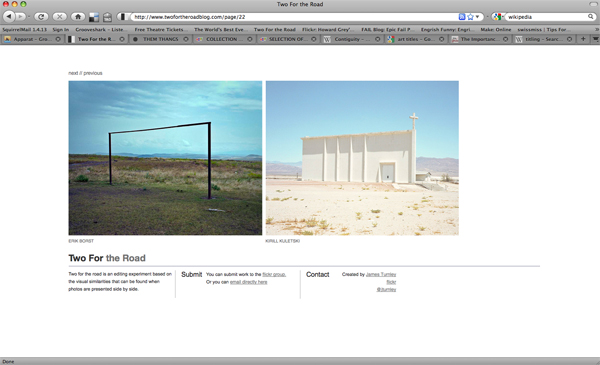 James Turnley created 'Two for the Road' as "an editing experiment based on the visual similarities that can be found when photos are presented side by side." Through merit of proximity the images share a contiguous dialogue. Through this, the image's messages are skewed and a new message emerges. In a similar way that the title of an artwork affects the context it is viewed in, so when objects are put together they cannot help but be changed by each other.
James Turnley created 'Two for the Road' as "an editing experiment based on the visual similarities that can be found when photos are presented side by side." Through merit of proximity the images share a contiguous dialogue. Through this, the image's messages are skewed and a new message emerges. In a similar way that the title of an artwork affects the context it is viewed in, so when objects are put together they cannot help but be changed by each other.
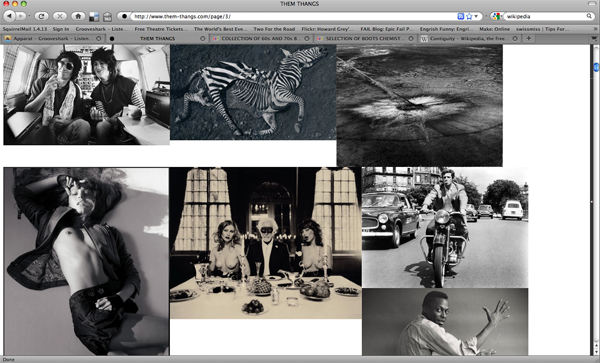
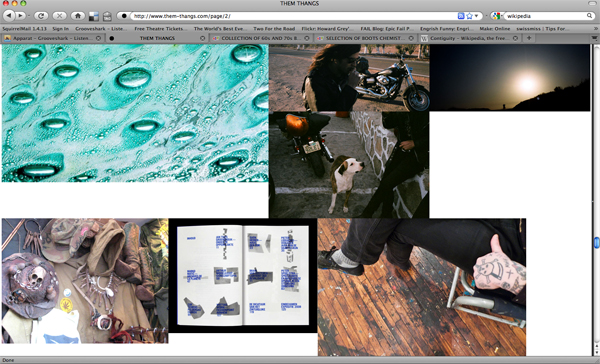 'Two for the Road' is a curated attempt to create rhyme. 'Them Thangs' is run by Justin Blyth: 'It is a collection of things I like, intended for visual inspiration'. It is perhaps best described as a visual blogzine. The display of the images is part curated and part organic. Images are selected but then allowed to flow through the page, creating many and different relationships. Images which ordinarily would seem unremarkable, when viewed as a collection (through benefit of being physically/aesthetically, ideologically or contiguously related) become a necessary part of a captivating and beautiful whole.
'Two for the Road' is a curated attempt to create rhyme. 'Them Thangs' is run by Justin Blyth: 'It is a collection of things I like, intended for visual inspiration'. It is perhaps best described as a visual blogzine. The display of the images is part curated and part organic. Images are selected but then allowed to flow through the page, creating many and different relationships. Images which ordinarily would seem unremarkable, when viewed as a collection (through benefit of being physically/aesthetically, ideologically or contiguously related) become a necessary part of a captivating and beautiful whole.
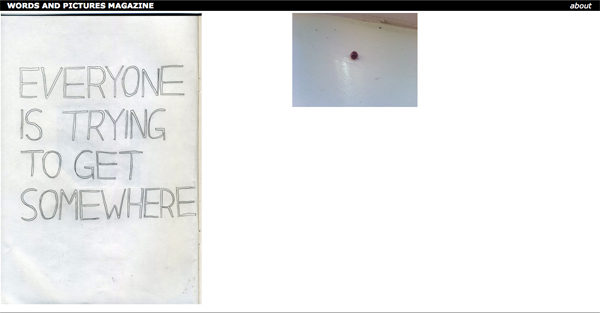
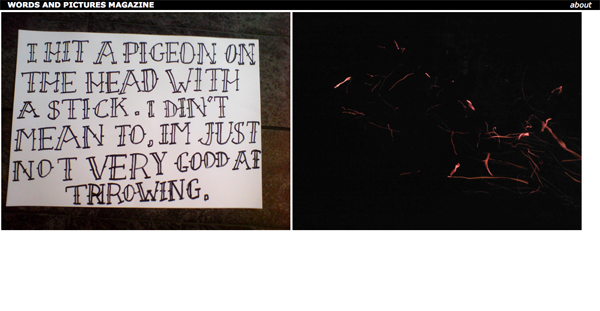
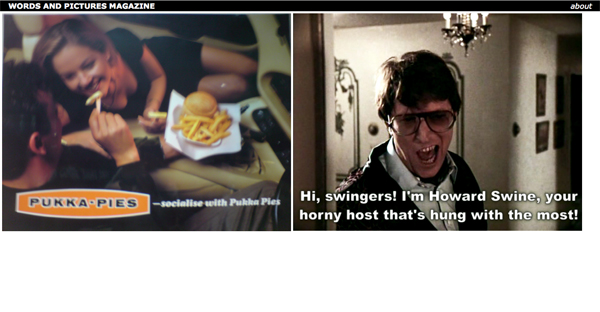 Words and Pictures is a website I am in the process of creating with Mike which attempts to cultivate the moment of rhyme by allowing uploaded content to appear next to each other randomly. This is to further explore the themes discussed here: particularly contiguity, and also to create content for an off line printed magazine of curated and edited pairs of objects.
Words and Pictures is a website I am in the process of creating with Mike which attempts to cultivate the moment of rhyme by allowing uploaded content to appear next to each other randomly. This is to further explore the themes discussed here: particularly contiguity, and also to create content for an off line printed magazine of curated and edited pairs of objects.
Allotment Away!
So we (Lizzy and me), started the allotment project this weekend- we just went round some allotments and a local archive- was good- I'm excited about this bad boy- I'm not going to post everything here I don't think. I've made a separate and purely functional blog for it- over here: Allotment Project Blog- I'm hoping to put all and everything that comes to us up there- but I'll probably post the highlights here. Mostly images and bullet thoughts I guess. Allotment Project Blog.
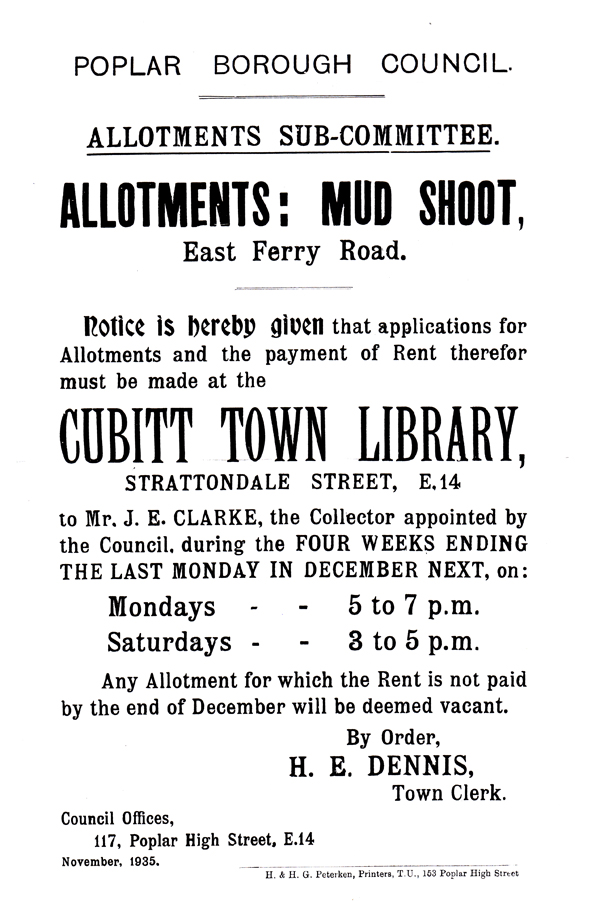
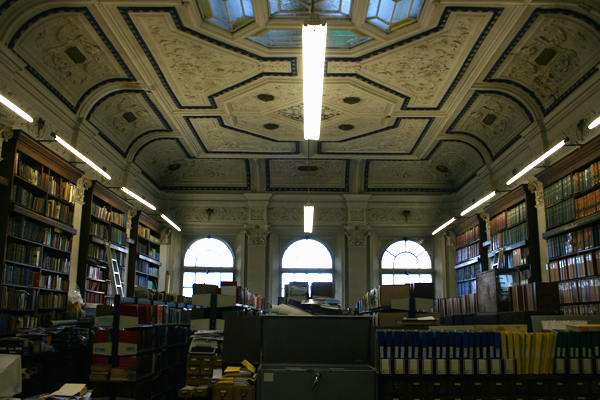
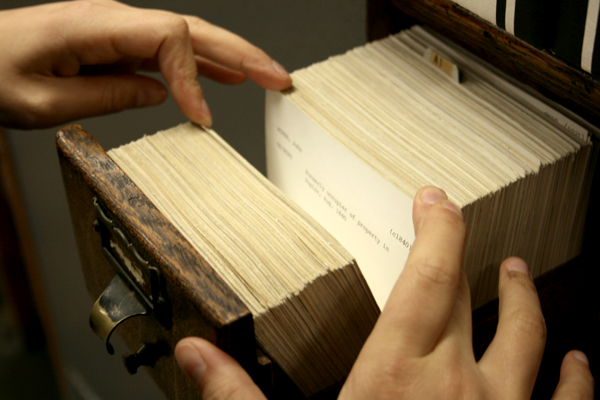
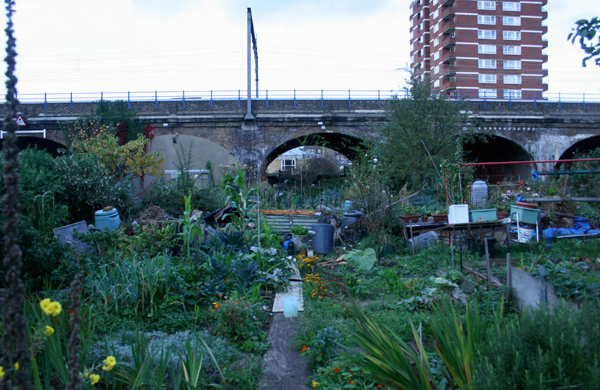
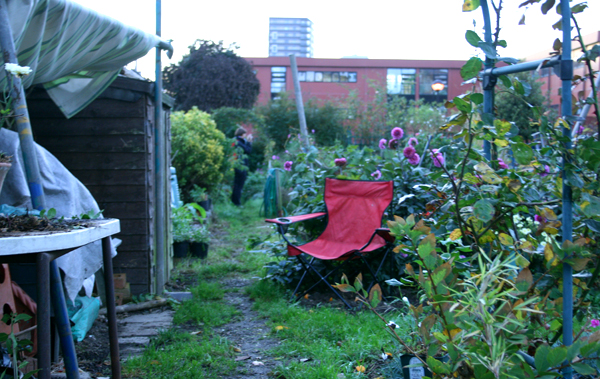
Augmented Reality
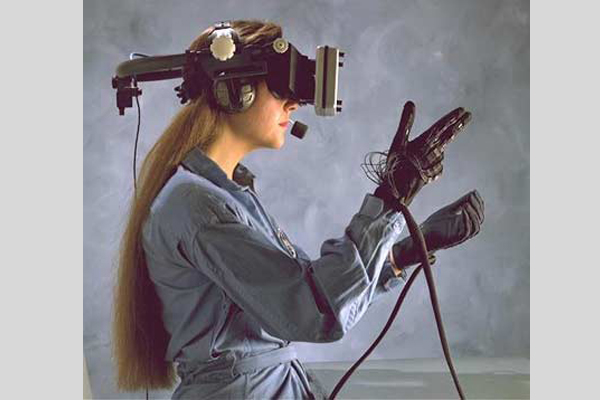 Having just completed a placement at Kin Design and currently hanging about with the nice people at Moving Brands a few really interesting things have passed my way- here is an assortment of my favourite bits and pieces from the AR world.
Having just completed a placement at Kin Design and currently hanging about with the nice people at Moving Brands a few really interesting things have passed my way- here is an assortment of my favourite bits and pieces from the AR world.
This is Sticky Light, not sure if it is strictly Augmented Reality but it's super cool so fuck it.
This is an amazing ted talk which I can't quite believe I hadn't seen before- the set up means that data can be projected onto almost any flat surface (a wall, your hand) and interacted with using coloured fingertips and a camera- all for only $200.
Moving Brands recently released their Moving Identity Paper. The front cover has their logo on it- a programme can recognise this and augment things on top- the real kicker though is that built into the programme is an interface- held straight on there are blog posts, rotate 90 degrees it's images, again and it's tweets, another 90 and it's videos. You can also scroll through previous and next content by moving the book left and right, if you tilt the book it scrolls down longer blogs- seriously incredible and a brilliant example of the principles which are in the book.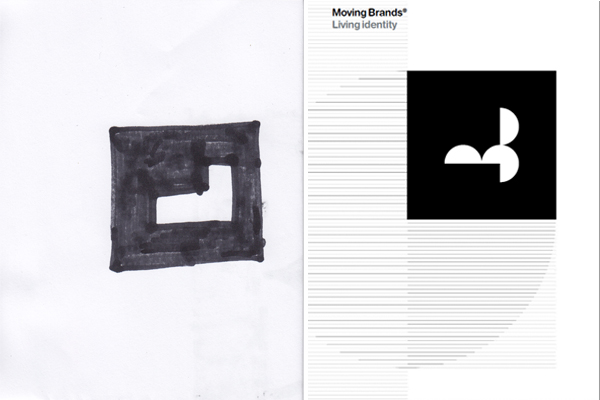
You can use the book to interact with the application which is on their website over here. Or print the glyph off yourself or even, and I think this creates even more potential for this technology, you can draw it yourself. The image above shows the actual cover and my crude, blocky drawing that I used to interact with the programme.
Teddy Bears
More interviews, today with Violet Marriott, a Teddy Bear collector. A very impressive collection that is displayed on her sofa as you walk in which you can't ignore. I guess the things which interested me where the age of the bears, which were generally though not exclusivley, old- like some over 100 years old. The acquisition, ad criteria of the bears was also interesting- they were obtained for aesthetic value and also to prevent their destruction- Vi commented that she liked the tattiest ones best, and they were acquired via auctions, shops, gifts, stealing and skips, and whilst heritage and providence played a part in some of the value (sentimental and fiscal) and where purchased for not inconsiderable sums they were placed on par with the least notable which had become something of a mascot. All the bears wore clothes, mostly made by Vi and she referred to each by name which either referred to some sort of history which the bear had 0r to it's character- Edwin, Rupert (as in Brookes), Seigfried (as in Sassoon), Cherub, Blackie, Brass Eye, etc. A couple of quotes: 'well they're not bears, they're people', 'I like the tatty ones they're special'
Overall I think I took away the idea of collectable and context again i.e. the age and the names and the 'tattyness', the idea of memories and experiences embodied into an object is also notable. Thanks ever so much to Vi for talking to me.
